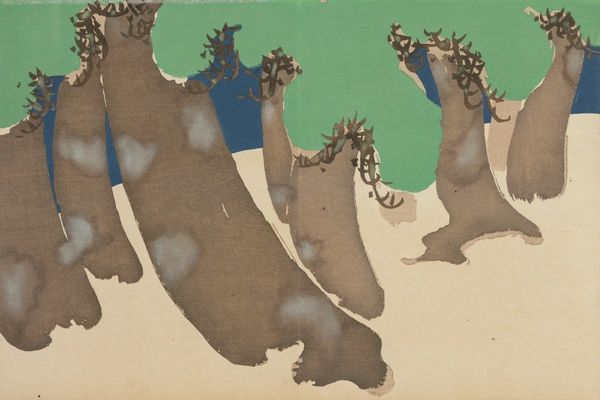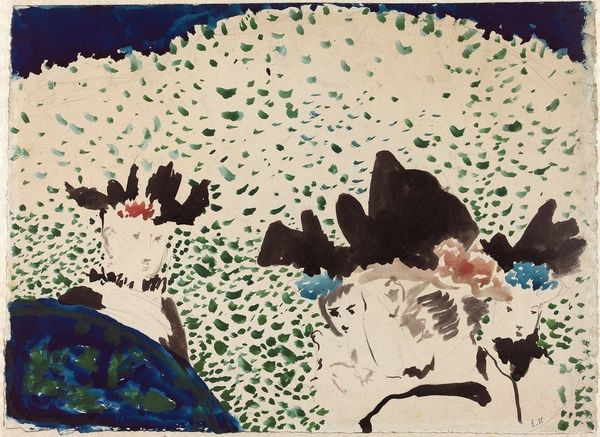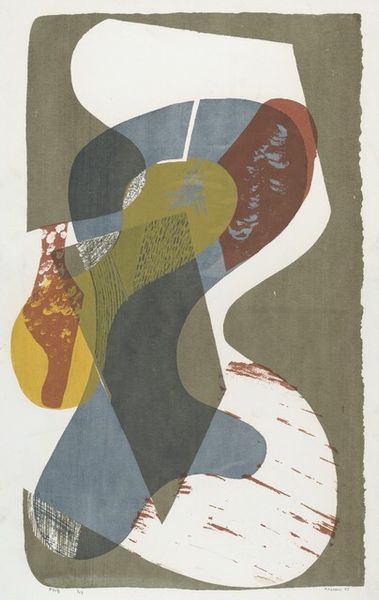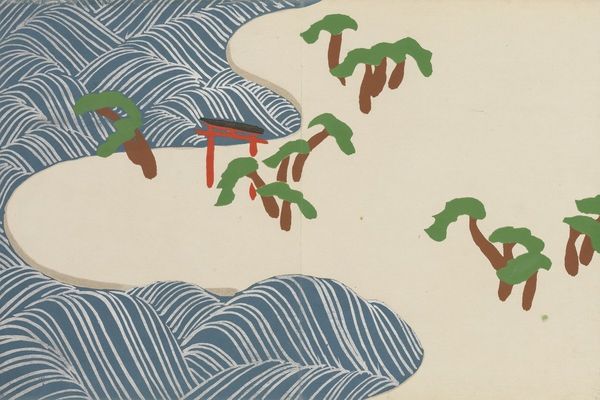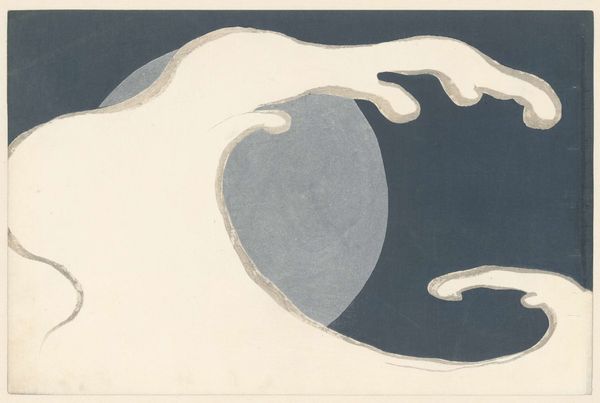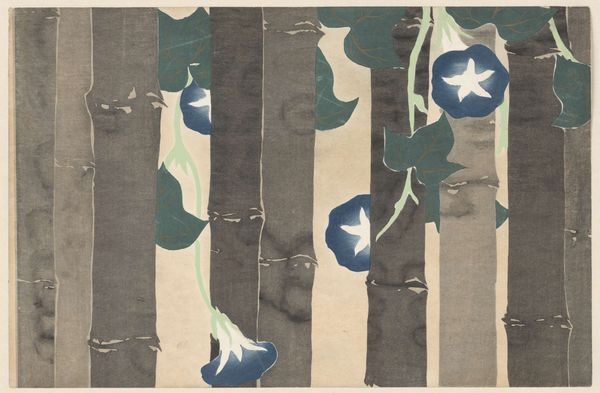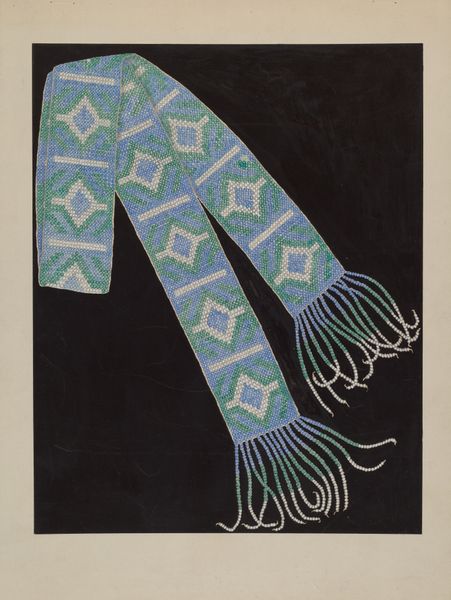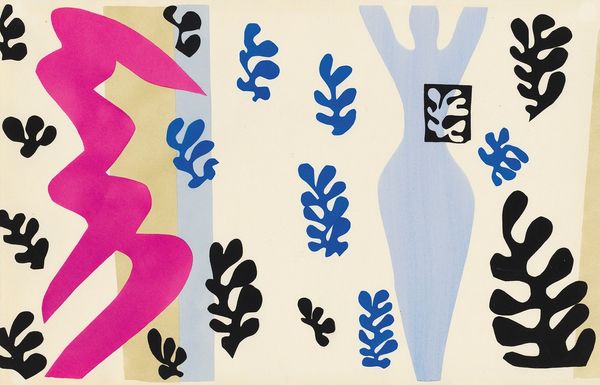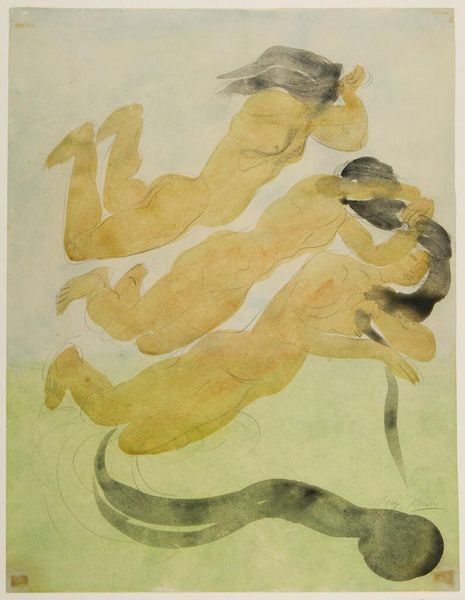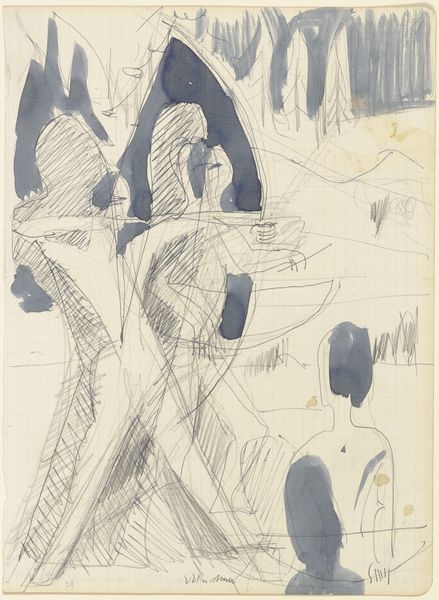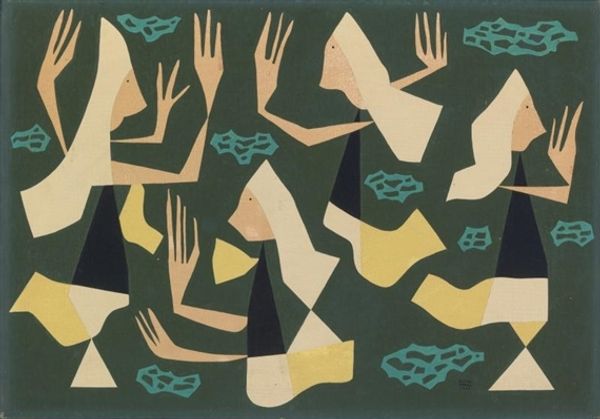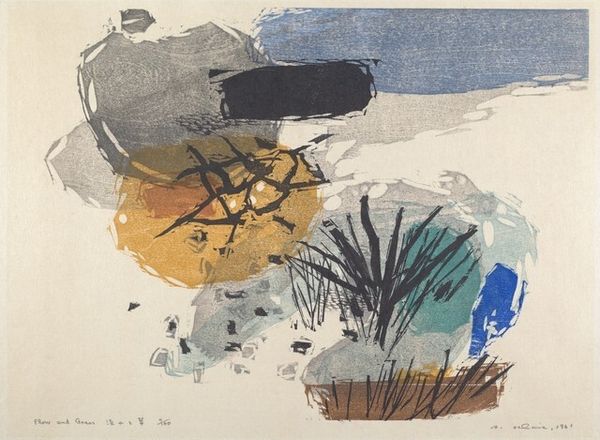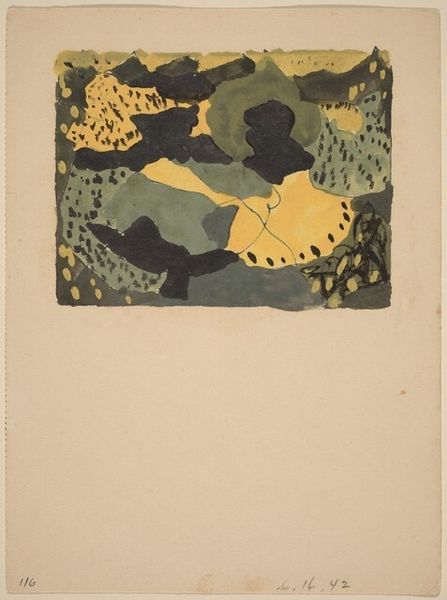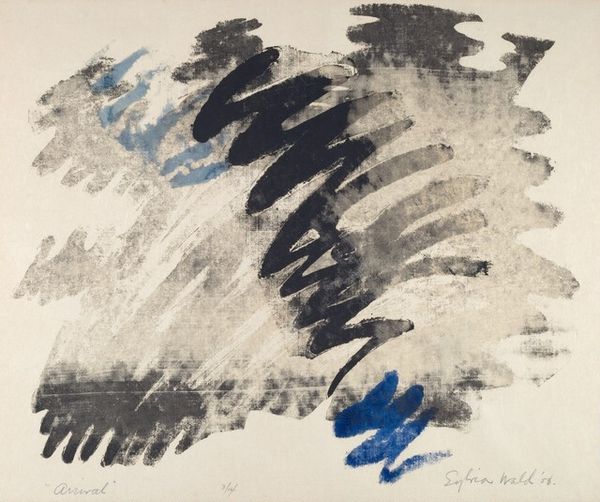
Dimensions: height 310 mm, width 439 mm
Copyright: Rijks Museum: Open Domain
Editor: So, here we have Kamisaka Sekka’s "Pine Trees" from 1909. It’s a watercolor piece housed here at the Rijksmuseum. It’s remarkably… abstract. The trees are more like shapes than realistic representations. What strikes you most about it? Curator: Well, viewing it through a historical lens, it reflects a fascinating intersection of tradition and modernism in early 20th-century Japan. Sekka was a key figure in the Rimpa revival movement. Consider that he was trained in traditional arts, yet this image demonstrates a clear engagement with western abstraction. Does it make you wonder what his audience would have thought? Editor: Definitely! It’s like he’s walking a tightrope between different worlds. The colors, especially the greens and blues, feel very impressionistic, yet the subject is classically Japanese. Curator: Precisely! It prompts the question: How was Japanese art being marketed, both domestically and internationally, at this time? There's a tension between preserving cultural identity and embracing international artistic trends. Also, notice the boldness of the lines and simplified forms. Do you see any relationship to the *ukiyo-e* tradition, beyond the overt subject matter? Editor: Now that you mention it, I see the connection! It's like he is reinterpreting the graphic quality from ukiyo-e within a modern, almost flattened space. It doesn’t feel traditionally academic in any way, so it makes you wonder if the establishment critiqued it or encouraged it. Curator: Exactly, and the abstraction serves a social function, challenging traditional perceptions and potentially engaging a new audience with Japanese art. Its acquisition and display here, in the Rijksmuseum, says a lot. Editor: I hadn't really thought about how its placement in a European museum contributes to the story. It all feels more interconnected now, almost as if the artwork tells as much a story as it illustrates something. Curator: Indeed, every element—style, subject, even location—plays a role in shaping the art’s meaning and its journey through time.
Comments
No comments
Be the first to comment and join the conversation on the ultimate creative platform.
